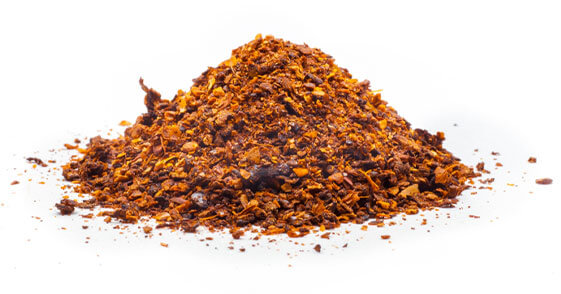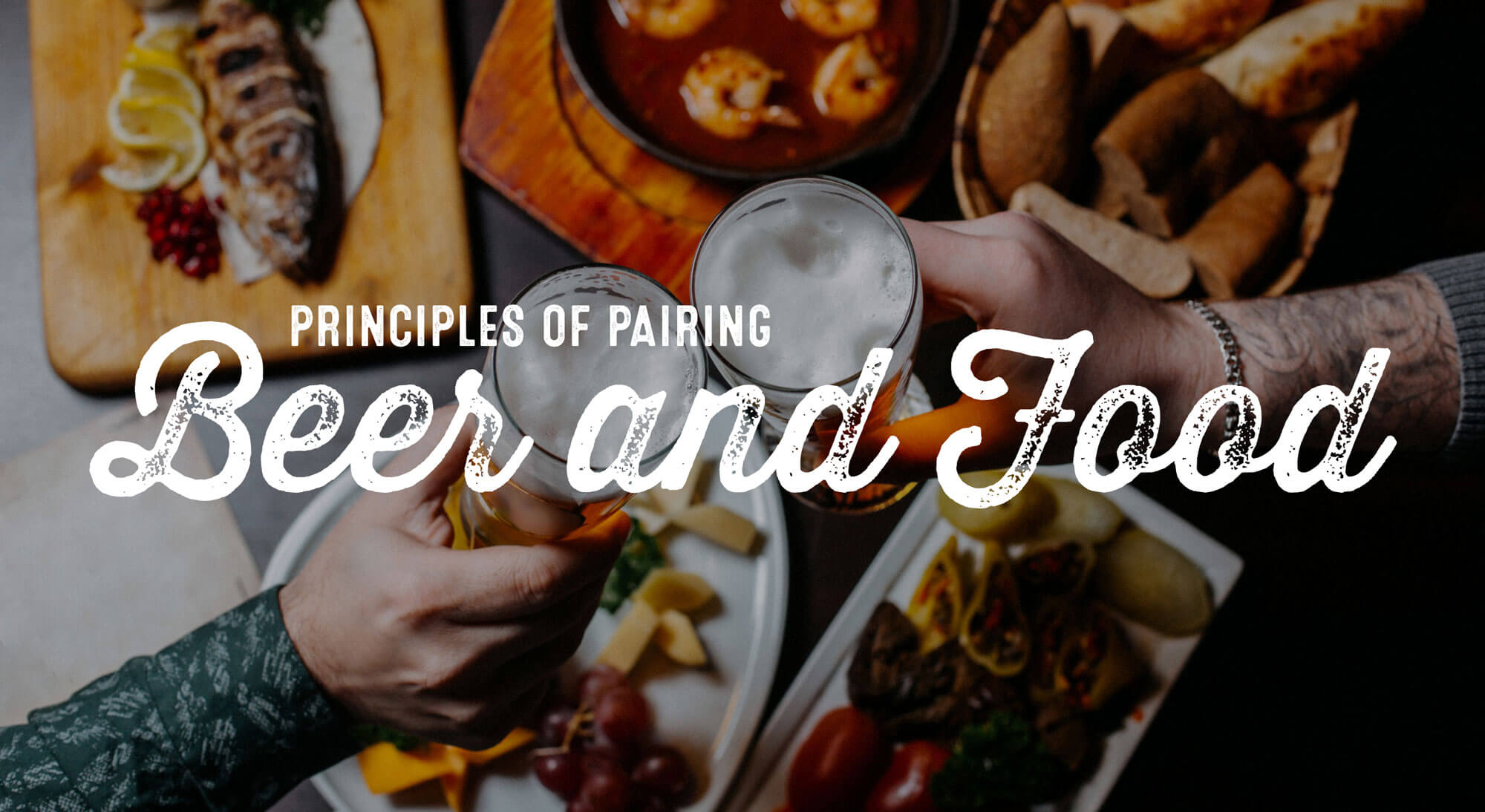
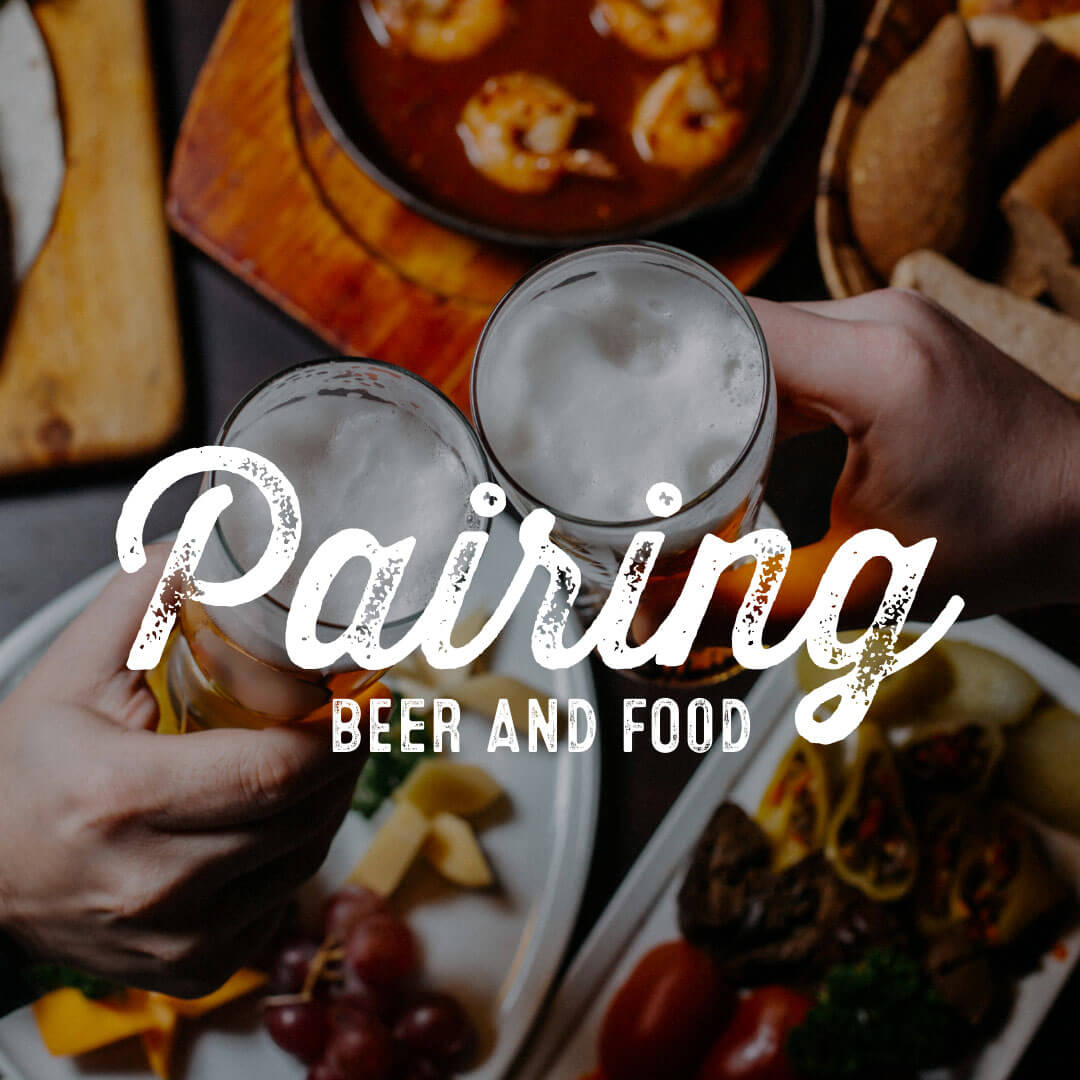
FINDING THE PERFECT BALANCE
Because beer is, in fact, food, and because beer offers such a wide array of aromas and flavor, it allows for the perfect pairing to fully enhance your dining experience. Understanding exactly how the flavors and aromas of your beer can bring your meal to another level is actually quite simple and fun.
When pairing beer with your meal, look for harmonies and match strength with strength, while taking into consideration bitterness, sweetness, heat/spice, richness, and carbonation.
Finding Harmonies – Combinations that shares common aroma and flavor elements works best. The malty, toasty flavors of an American Brown Ale paired with the charred, fatty flavors of a burger or steak; the light, citrusy notes of a Belgian Witbier paired with seafood; the rich, lightly burnt, sometimes chocolatey/coffee-like flavors of an American Porter paired with the sweetness of a chocolate chip cookie are all prime examples of finding harmonies.
Match Strength with Strength – Delicate foods work best with delicate beers. strongly flavored foods demand more assertive beers. Intensity of flavor is the sum of the total taste experience. With beer, that involves alcohol strength, malt character, sweetness, richness, hop bitterness, roastiness and more. When pairing beer with food – sweetness, fat, textures, cooking methods, spicing, and complexity all have a roll in the dance.
Bitterness, Sweetness, Heat/Spice, Richness and Carbonation – Beer and food qualities interact with each other in predictable and specific ways. Considering these interactions ensures that the beer and food will balance each other, so that one element does not skew the other. Foods big on sweetness or fatty richness can be matched with various elements in beer such as sweetness, roasted/toasted malt, or alcohol. Carbonation works well to cut richness. Malty sweetness brings down heat. Hoppy bitterness brings up spices and heat.
COOKING TIPS FOR THE CHEF
Have fun with it. Keep it simple, don’t over think it. If it’s not fun, you’re doing it wrong. This is beer! The best part of trial and error…is the trial. Keep practicing! Look to gain an understanding of malt flavor profiles that different beer styles offer. Beer IS, in fact, food. The malt character, combined with a touch of hops, allows for an opportunity to incorporate distinct flavors and aromas to your final dish. Steer clear of overly bitter brews when cooking with beer (in most cases).
It is recommended to not reduce beer while cooking, as it will likely become too bitter for the dish. Drinking an IPA while cooking, however, is highly recommended while dancing in the kitchen, if that’s your thing. Never cook with a beer that you wouldn’t drink. If you don’t like the flavor in your glass, it likely will not appeal to you on a plate.
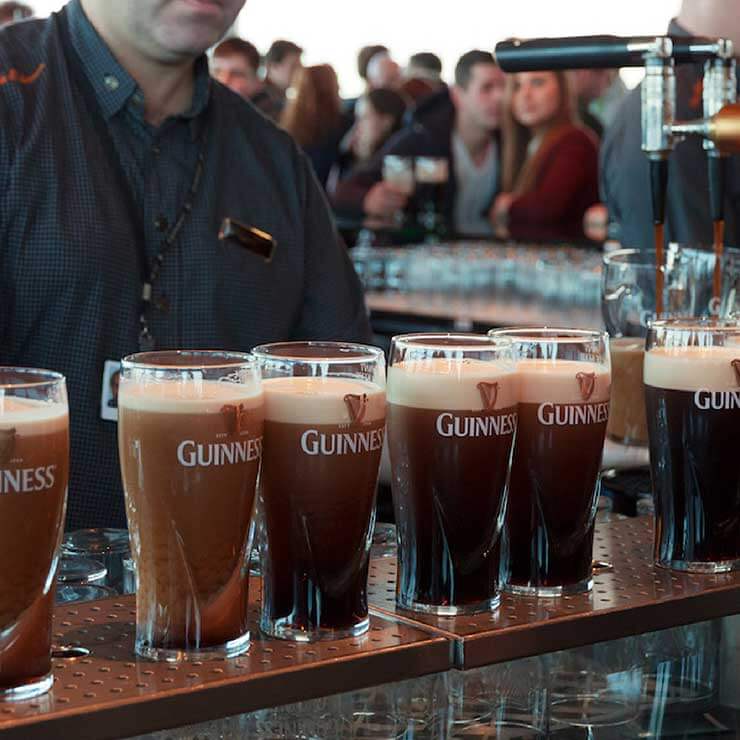
SAINT PATRICK'S DAY
The History of St. Patrick's Day
Different beers pair well with a variety of foods, so it will prove helpful to learn some taste differences before you hit the kitchen.
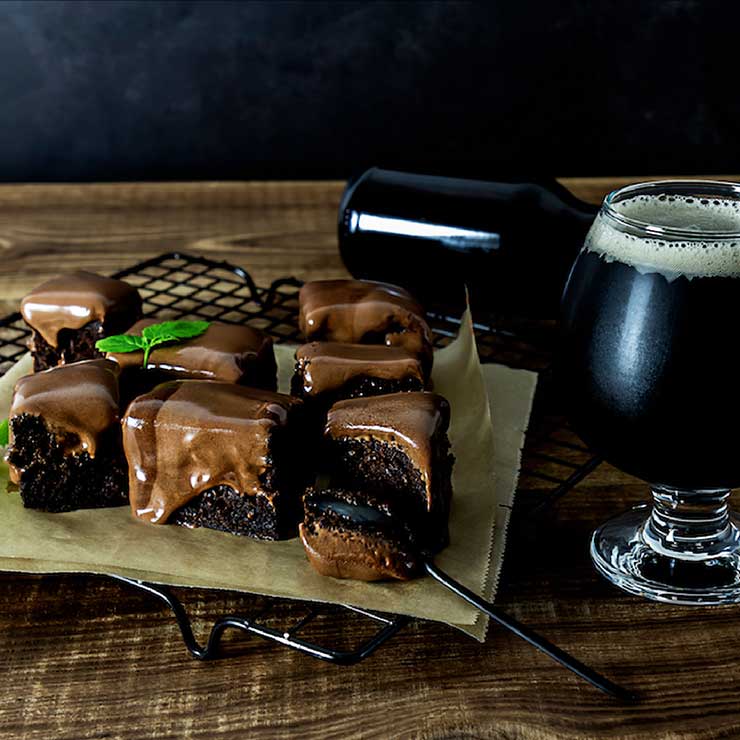
Valentine's Day
Craft Beer Box of Chocolates
Different beers pair well with a variety of foods, so it will prove helpful to learn some taste differences before you hit the kitchen.
If you take a few minutes to understand “The 3 C’s of Pairing Beer & Food” you will immediately be able to put them to work the next time you sit down to eat. The 3 C’s are Complement, Contrast, and Cut Let’s take a look!

While considering beer and food pairings that complement one another, look for similar aromas and flavors in both the beer and the food. For example, if the food has a certain spice to it such as coriander, then look for a beer with a similar spice note, like a Belgian Witbier, which is actually brewed with coriander. Try pairing a cheese that has a pleasant funky aroma, with a similarly funky-smelling sour beer, such as a Gueuze. For dessert, try pairing the sweet, rich flavors of chocolate cake with the rich, robust flavors
of a Russian Imperial Stout.
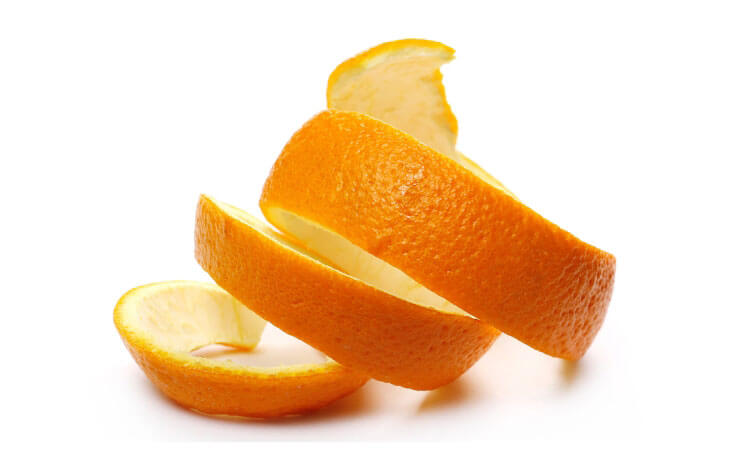
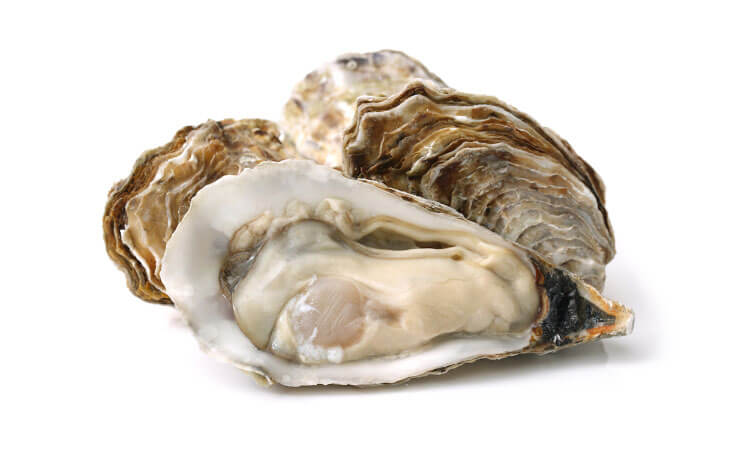

When contrasting a beer with a particular food, look for opposing flavors and aromas. These are flavors that are, in essence, opposites. Sweet and sour on their own can both be overwhelming. Sour can pucker and create imbalance in select tastes, whereas sweet, oftentimes overbearing and cloying, covers up more subtle flavors. However, when used together, sweet and sour balance each other out and create a wonderfully unique taste experience. As the old saying goes, opposites attract, and when they do, they add up to a complete and delicious pairing. A classic example of contrast when pairing beer and food is Dry Irish Stout paired with fresh, raw oysters. The roasted, chocolate bitterness of the stout contrasts perfectly with the briny, sweetness of the oysters. This pairing is so classic that many breweries
today actually brew their stouts with oysters or oyster shells.

Cutting is similar to contrast, it just takes it to a higher level. When we consider cutting, we are talking about big, bold flavors and sensation. Think the heat on your tongue when you taste the spicy flavors of a hot chicken wing. To cut that heat, you’ll want to pair these extreme flavors with a beer that will take it down a notch. The sweet, malty flavors of an Amber Ale will cut through the heat and spice of the chicken wing. For another example, try cutting the richness of a fatty cheese with the bright sourness Fruited Lambic.
